- Home
- Jeffery Deaver
The Never Game Page 19
The Never Game Read online
Page 19
40.
Gangly Marty Avon rose from his chair and strode across the room. He was tall, probably six foot five. Thin, though a healthy thin that probably came from a racehorse metabolism. Avon strode forward, hands dangling, feet flopping. His mass of curly blond hair—very ’60s—jiggled. Shaw had expected the creator of The Whispering Man to be dressed gothic, in black and funereal purple. Nope. A too-large beige linen shirt, untucked, and, of all things, bell-bottoms in a rich shade of rust. His feet were in sandals because what else could they be in?
Shaw looked around the office, as did Standish. Their eyes met and he raised a brow. While the reception area may have featured pictures of the crazy psychopath, the Whispering Man, here the décor was kids’ toy store: Lionel trains, plastic soldiers, dolls, building blocks, stuffed animals, cowboy guns, board games. Everything was from before the computer era. Most of the toys didn’t even seem to need batteries.
Standish and Shaw shook his hand, and he directed them to sit on a couch in front of a coffee table on which sat a trio of plastic dinosaurs.
“You like my collection?” His high voice was dusted with a rolling Midwestern accent.
“Very nice,” Standish said noncommittally.
Shaw was silent.
“Did you both have a favorite toy growing up? I always ask my visitors that.”
“No,” they both answered simultaneously.
“You know why I love my collection? It reminds me of my philosophy of business.” He looked fondly at the shelves. “There’s one reason and one reason only that video games fail. Do you want to know why that is?”
He picked up a wooden soldier, an old one, resembling the nutcracker from the ballet. The CEO looked from the toy to his visitors. “The reason games fail is very simple. Because they aren’t fun to play. If they’re too complicated or too boring, too fast, too slow . . . gamers will walk away.”
Setting down the toy, he sat back. “Nineteen eighty-three. Atari is stuck with nearly a million cartridges of games that nobody wanted, including the worst video game in history: E.T. Good movie, bad game. Supposedly, the games and consoles were buried in a secret landfill in New Mexico. Not long after that the entire industry collapsed. The stock market had the Great Crash of ’29. Video gaming had ’83.”
Standish steered the meeting back on track. She asked if Avon knew about the recent kidnapping.
“The girl from Mountain View? Yes.” Behind him was a huge poster for Siliconville. His desk was littered with maps, many official-looking documents, some photocopies and some with seals and original signatures. The real estate project seemed to be taking more time than his gaming business.
“There was another one too, late last night.”
“Oh, I heard about that! It’s the same kidnapper?”
“We think so.”
“My God . . .” Avon looked genuinely distraught. Though, understandably, his was probably a double-duty frown, the second meaning being: What does this have to do with me?
“And he appears,” Standish said, “to be modeling the crimes after The Whispering Man.”
“No, no, no . . .” Avon closed his eyes briefly.
She continued: “We know about the incident in Ohio a few years ago.”
His head was hanging. “Not again . . .”
Shaw explained what Sophie Mulliner had found in the room she’d been sealed into.
“Five objects.” Avon’s voice was hollow. “I came up with five because my daughter was learning to count. She used her fingers. She’d do the right hand and then, when she went to the left, she started over again.”
Shaw explained, “One possibility is that the kidnapper’s a player who’s obsessed with the game and is acting it out. Like the boys in Ohio. If so, we want to try to trace him.”
The detective said, “Mr. Shaw here had a conversation with Tony Knight and . . .” A glance Shaw’s way.
“Jimmy Foyle.”
“Conundrum. It’s a real phenomenon. Supposedly the longest source code ever written for a game.”
Fifteen quadrillion planets . . .
Avon added, “Alternative reality. I’ve thought about publishing one but you really need supercomputers for them to work right. You should see their servers. Well, what can I help with?”
Shaw explained what Foyle had suggested. How they wanted to locate local gamers who were online frequently—obsessed with the game—as well as offline at three specific times: when Sophie was kidnapped, when she was rescued and when Henry Thompson was taken.
Now would come the battle. Avon would say, Sure. And you don’t get user logs without a warrant.
And he was indeed shaking his head.
“Look,” Standish said, “I know you’ll want a warrant. We’re hoping you’ll cooperate.”
Avon scoffed. “Warrant. I don’t care about that.”
Standish and Shaw regarded each other.
“You don’t?”
The CEO chuckled. “Do you know what an EUA is?”
Shaw said he didn’t. The detective shook her head.
“‘End user agreement.’ Whenever anybody subscribes to The Whispering Man, they have to agree to the EUA. Every software and hardware company makes you agree or you don’t get the goods. Nobody reads ’em, of course. Ours has got a clause that gives us permission to use their data any way we want—even give it to the police without a warrant.
“No, we have other problems. We’ll have to track the user—your suspect—through his IP address. We get hacked all the time—all game companies do—so we separate online presence from personal information. All our gaming servers know is that User XYZ has paid, but we don’t know who he is. That might not be a problem, tracking IP to the user’s computer. But most of our subscribers—at least the younger ones—use proxies.”
“Masks that hide their real location when they’re online,” Shaw said. He did too in all of his online activity.
“Exactly. ID’ing somebody using a proxy is time consuming and sometimes impossible. But let’s give it a shot. When was he offline?”
Shaw displayed his notebook.
“Now, we’ll want subscribers who play for, let’s say, twenty-five hours a week or more but were offline then.” Nodding at the notebook. “Quite some handwriting.” Avon hunted and pecked and, as he did, he mused, “Did you know that in China they’re considering legislation to limit the hours you can play? And the World Health Organization just listed video gaming addiction as a disease. Ridiculous. That’s like saying lawyers who work more than forty hours a week are dysfunctional. Nurses, surgeons.” He fiddled with a pencil that had a clown’s head topper. He glanced at the screen. “Okay. Here we go.”
Standish sat forward. “You have results already?”
Shaw, familiar with the speed of Velma Bruin’s rewards-finding algorithm, Algo, wasn’t surprised.
Reading the screen, Avon said, “The answer is a yes, with a caveat. There are about two hundred and fifty-five people who play the game at least twenty-five hours a week and they meet the offline timing criteria. Of those, sixty-four aren’t anonymous—no proxies. But none of them are within a hundred miles of here. The others? They’re behind proxies. So we have no idea where they are—maybe next door, maybe Uzbekistan.” He gazed at the list. “Most of them are off-the-shelf proxies, not very righteous. They can be cracked but it’ll take some time.”
He tapped out another request. Hit RETURN. “There,” he said, “I’ve got somebody on it.”
And then Marty Avon went into a different place mentally. Finally he asked, “Where was the girl hidden?”
Shaw said, “The Abandoned Factory. Level 1.”
“You know the game? You play it?”
“No. You’re thinking he put Henry Thompson—that’s the new victim—at a different level?”
Avon said, “The ki
dnapper’s a gamer, obviously, and it’d be a fail to repeat a level and a cheat to play out of order.”
Shaw, who embraced technology in his work, had been amused to learn that geeks often swapped verbs for nouns: A fail was “a loss,” an ask was “a question.”
“The second level’s called The Dark Forest.”
“So Henry Thompson’s being held in the woods somewhere.”
Standish grimaced. “Got a few acres of those around here.”
Shaw’s eyes fell on the set of toy soldiers. They were about three inches high, dark green, in various combat poses. Troops from the Second World War, probably. Nowadays, what would the manufacturer produce? Men or women sitting at drone command stations? A cybersecurity expert at a desk, hacking into Russian defenses?
The CEO leaned back, lost in thought, eyes closed. They popped open. “What were the five objects he left with the girl?”
Shaw told him: “Water, glass bottle, a book of matches, fishing line, a strip of cloth.”
Avon said, “Good.”
41.
For all his traveling, the restless man had never been in a helicopter.
Now that he was, he wasn’t enjoying it.
The altitude wasn’t the problem, not even with the open door. Canvas and steel, in the proper configuration, are substances that you can depend on, and the harness in the Bell was intimately snug. Shaw and his siblings had gotten over any fear of heights early—Ashton again—by learning to climb before they were thirteen. When no challenging jobs beckoned, Shaw would find a nice vertical face and ascend (always free-climbing—using ropes to prevent falls, not to aid in the climb). Earlier in the day he’d looked fondly over Standish’s shoulder at the trail map leading to the site of the climb he’d been planning while visiting his mother at the Compound.
No, the five hundred feet between him and the tree line was not a problem. Shaw simply didn’t want to puke. That, he hated more than pain. Well, most pain.
Maybe inevitable, maybe not. Teeter-totter. He inhaled deeply. Bad idea; exhaust and fuel fumes were coconspirators.
LaDonna Standish was strapped in beside him. They were riding backward, facing two tactical officers, dressed in black, with matching body armor. POLICE was printed in white on their chests—their backs too, Shaw had seen, in larger type. They were holding Heckler & Koch machine guns. Standish was not enjoying the trip either. She refused to look out the open door, and she kept swallowing. She clutched an airsickness bag and Shaw hoped she didn’t start in with that. He really hoped she didn’t. The power of suggestion is formidable.
She wore body armor and had only her sidearm. Shaw too was in a Kevlar vest, without weapon, per the rules. The out-of-harm’s-way dictate had obviously gone to hell.
How they happened to be here was thanks to the creator of The Whispering Man, Marty Avon. The CEO had explained that the game’s algorithm randomly assigned three of the five items that players were abandoned with, like Sophie’s fishing line, scarf and glass bottle. The other two items might vary but fell into two categories: sustenance and communication. Food or water—Sophie had been given the latter—and some way to signal for help, to let an ally know where you were, or to warn about danger. Matches, in her case. Players sometimes got a flashlight or signal mirror. More often, they received a way to start a fire. If not matches, a cigarette lighter or a flint-and-steel kit. This could also help players stay alive in some of the colder game settings, like mountaintops and caves.
“If the victim’s in a forest and he has matches or a cigarette lighter, he might try to start a fire,” Avon had suggested.
Shaw had said, “A brush fire in northern California? That’s one thing that’d be sure to get somebody’s attention.”
Drought, heat and winds had helped fires ravage part of central and northern California lately. Shaw and his family had battled one on the Compound years ago and nearly lost the cabin.
“He won’t be a fool,” Standish had said. “He’ll control it. Probably set a small bonfire in a clearing or on rock, where it’ll be noticed but won’t spread.”
Standish had called the Park Service, which used drones and satellites mounted with thermal sensors to see if any of the systems had registered flames. She learned that, yes, the service had monitored a small blaze on a rocky hilltop in Big Basin Redwoods State Park. It had flared up about midnight, burned for a brief time and then went out. Infrared scans showed that by 1 a.m. the ground was fire- and ember-free once more. They’d marked the site to check it out later but sent no crews at that time.
Shaw had looked up the location on the map. It was a forty-minute drive from where Henry Thompson had been kidnapped.
Via speakerphone, the ranger had explained that it was curious there’d been a fire at that location at that time of the morning, since it wasn’t near any hiking trails, and the only road nearby, an old logging way, was chained off. Odd too that there was a fire at all, since there’d been no lightning strikes and the blaze was limited to a rocky shelf that didn’t seem to have any natural brush growing from the cracks in the stone. “Best we could figure, some campers went off road.”
Standish had then asked, “Satellite images of the site?”
The ranger had sent some and she, Shaw and Avon huddled over the game maker’s high-def monitor.
They were looking at what might have been a configuration of rocks or shadows but also might have been a human form, standing near the fire.
“Good enough for me,” Standish had said and grabbed her phone, pressing a single button to make a call.
Standish and Shaw had sped to Moffett Field, an old military air base north of Sunnyvale and Mountain View—only ten minutes from Destiny Entertainment. At least, ten minutes the way Standish had been driving. Shaw had held on to the armrest and enjoyed the NASCAR ride.
The military air functions of the field, Standish had explained, were shrinking, though an air-rescue operation remained. Google leased much of the field and the internet company was involved in the restoration of Hangar 1, which was one of the largest wooden structures in the world, built in the ’30s to house dirigibles and other lighter-than-air craft.
There they had climbed into the Task Force’s Bell chopper, which was now—after only a twenty-minute flight—closing in on the spot where the fire had been tagged. Four other tac officers were in an Air National Guard Huey, old and olive-drab, presently thumping away fifty yards to the starboard.
Through his headphone, Shaw heard Standish’s throat making tiny retching sounds and he pulled the unit off. It helped.
The hazy suburban sprawl of the valley became hills and trees, then the landscape turned tough, with lush, spiky redwoods giving way to rocky terrain, skeletal trees, dry riverbeds. This was the heart of Big Basin. Shaw had thought the rugged land would send updrafts skyward, making the ride worse. Oddly, though, the air was smooth; the bumpiness had been severe when they were over suburbia.
Standish’s head tilted slightly. She must have heard the pilot say something. Shaw put his headset back on and entered the conversation.
“Negative,” Standish called.
The pilot: “Copy. I’ll find an LZ.”
Shaw looked at Standish, who said, “Pilot asked if I wanted a flyby of the site. I told him no. Don’t imagine the perp’s here after all these hours, but he came back to the first site with a weapon. He’ll hear us land, but I don’t want him to see us.”
The odds he was back at this particular time? Shaw figured them to be low. Yet still vivid in his memory was the horrible collapse of Kyle Butler as the bullet struck him.
Two craft hovered over a clearing atop a plateau, two hundred feet from the valley floor, then touched down in tandem. Shaw was out fast, ducking his head unnecessarily—even though the rotors were high, you did it anyway. Almost immediately his gut felt better. And he didn’t react when Standish jumped out the othe
r side and bent over, vomiting. She then stood up, spitting. She rinsed her mouth with water from a bottle the pilot handed her, as if he kept them on hand for that very purpose.
She joined Shaw. “At least there’s nothing left for the ride home.”
They and the two officers with them jogged to the edge of the clearing, where they were joined by the four-man team from the Huey, also in tactical gear. They nodded to Standish and Shaw, who was examined with glancing side looks. The detective didn’t introduce him. The Bell pilot joined them and unfurled a map of the area. He’d been given the coordinates of the site of the fire and had marked it in red pen. He looked around, trying to judge where exactly they were in relation to it. Shaw glanced at the map, then the surrounding hills. He’d done orienteering on the Compound and, in college, had competed in the sport, a timed trek through the wilderness, following a route using only a compass and a map.
Shaw pointed. “The fire was there, about five hundred yards. Over that ridge. Straight line.”
Everyone was staring at him. He in turn looked to Standish. This was, after all, her hunt.
“Your supervisors brief you?” She was talking to the four men from the other helicopter. They weren’t Task Force, Shaw could see, different uniforms. Maybe county, maybe state. Their equipment was shiny, their boots polished, their guns hardly dinged.
One of these officers, a man with bulbous, dumbbell-lifting arms, said, “No, ma’am. Other than a hostage sit, possible HT on the scene.”
“At the last taking—the Mulliner girl—the unsub came back to the scene with a weapon. That ended up a homicide.” Two of the men nodded, recalling. “Weapon’s a nine-millimeter handgun. Glock. Long barrel probably—the accuracy. He knows how to shoot. It’s not likely he’s here—we’ve done sat and drone surveillance and didn’t see any vehicles—but, well, you can see the canopy. Lots of places to hide. Watch for shooters.”
Standish turned to Shaw. “Best routes?”
He borrowed the pilot’s red pen and drew lines, like parentheses, from where they stood to the ridge where the fire had been. “The north one? You’ll have to be careful.”

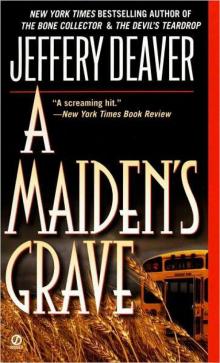 A Maiden's Grave
A Maiden's Grave Trouble in Mind: The Collected Stories - 3
Trouble in Mind: The Collected Stories - 3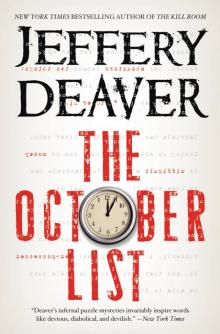 The October List
The October List The Deliveryman
The Deliveryman Garden of Beasts
Garden of Beasts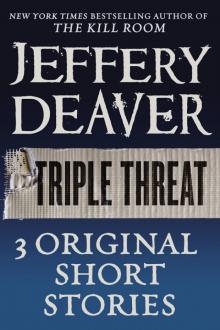 Triple Threat
Triple Threat The Broken Window
The Broken Window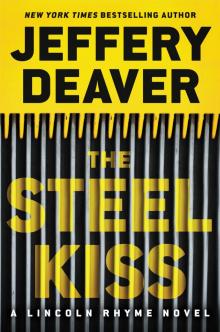 The Steel Kiss
The Steel Kiss Twisted: The Collected Stories - 1
Twisted: The Collected Stories - 1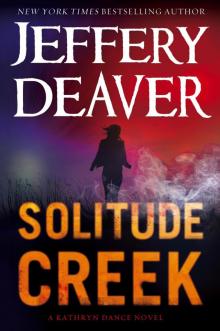 Solitude Creek
Solitude Creek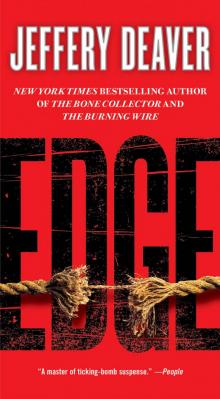 Edge
Edge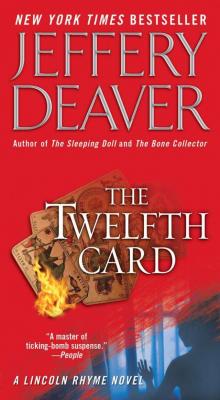 The Twelfth Card
The Twelfth Card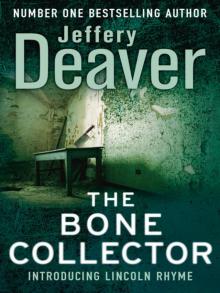 The Bone Collector
The Bone Collector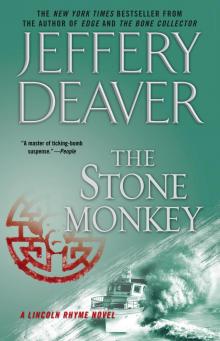 The Stone Monkey
The Stone Monkey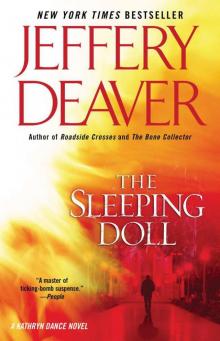 The Sleeping Doll
The Sleeping Doll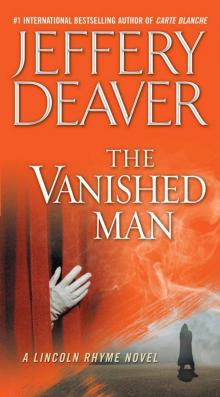 The Vanished Man
The Vanished Man The Kill Room
The Kill Room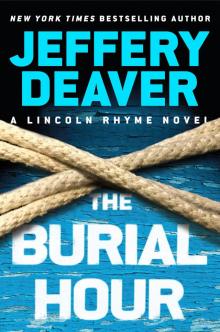 The Burial Hour
The Burial Hour An Acceptable Sacrifice
An Acceptable Sacrifice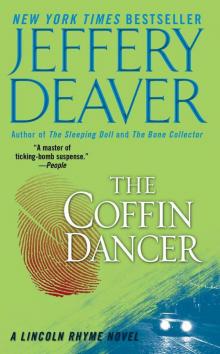 The Coffin Dancer
The Coffin Dancer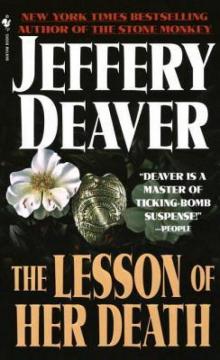 The Lesson of Her Death
The Lesson of Her Death The Empty Chair
The Empty Chair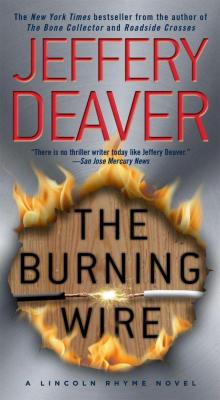 The Burning Wire
The Burning Wire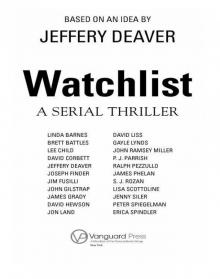 Watchlist
Watchlist Captivated
Captivated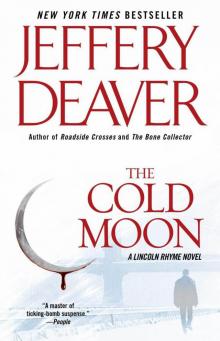 The Cold Moon
The Cold Moon Speaking in Tongues
Speaking in Tongues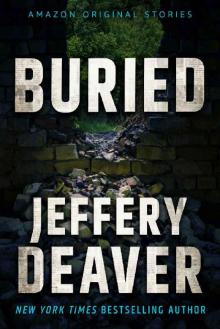 Buried (Hush collection)
Buried (Hush collection)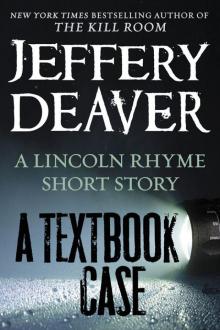 A Textbook Case
A Textbook Case The Victims' Club
The Victims' Club Nothing Good Happens After Midnight: A Suspense Magazine Anthology
Nothing Good Happens After Midnight: A Suspense Magazine Anthology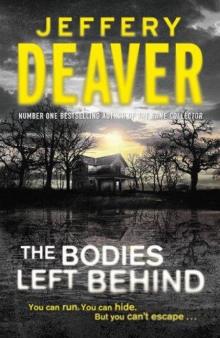 The Bodies Left Behind
The Bodies Left Behind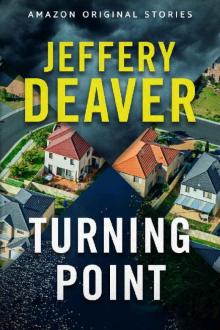 Turning Point
Turning Point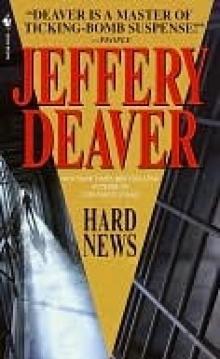 Hard News
Hard News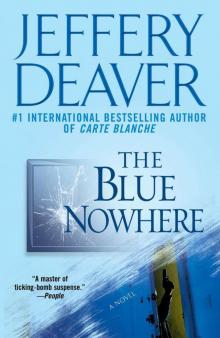 The Blue Nowhere
The Blue Nowhere The Second Hostage
The Second Hostage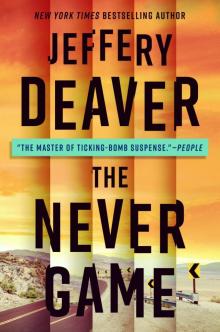 The Never Game
The Never Game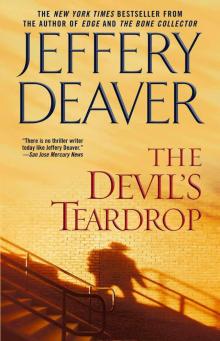 The Devil's Teardrop
The Devil's Teardrop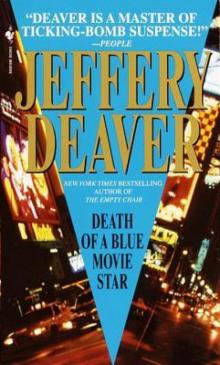 Death of a Blue Movie Star
Death of a Blue Movie Star The Skin Collector
The Skin Collector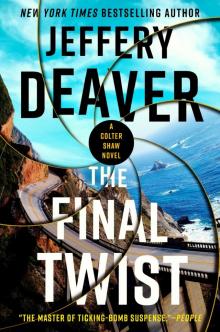 The Final Twist
The Final Twist Surprise Ending
Surprise Ending Twisted: The Collected Stories
Twisted: The Collected Stories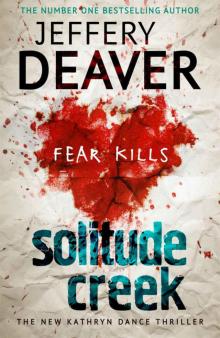 Solitude Creek: Kathryn Dance Book 4
Solitude Creek: Kathryn Dance Book 4 Twisted: The Collected Short Stories of Jeffery Deaver
Twisted: The Collected Short Stories of Jeffery Deaver Rhymes With Prey
Rhymes With Prey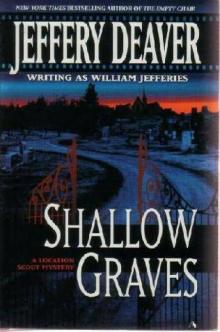 Shallow Graves
Shallow Graves Bloody River Blues
Bloody River Blues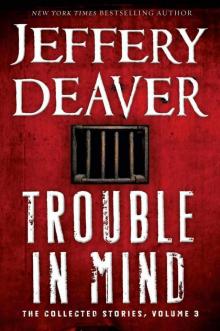 Trouble in Mind: The Collected Stories, Volume 3
Trouble in Mind: The Collected Stories, Volume 3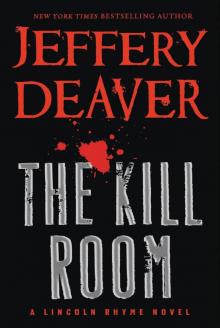 Lincoln Rhyme 10 - The Kill Room
Lincoln Rhyme 10 - The Kill Room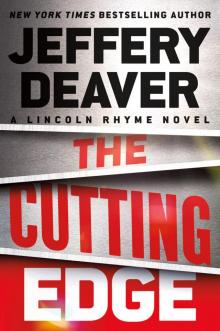 The Cutting Edge
The Cutting Edge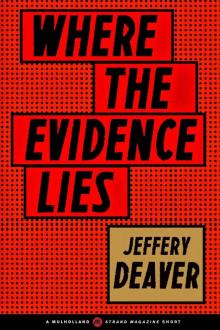 Where the Evidence Lies
Where the Evidence Lies Hell's Kitchen
Hell's Kitchen Twisted
Twisted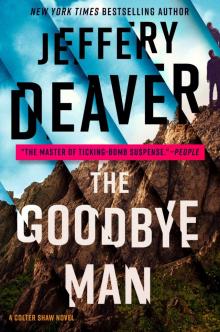 The Goodbye Man
The Goodbye Man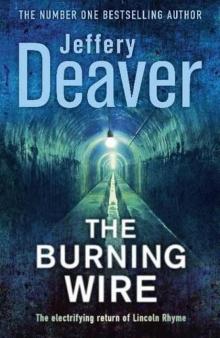 The burning wire lr-9
The burning wire lr-9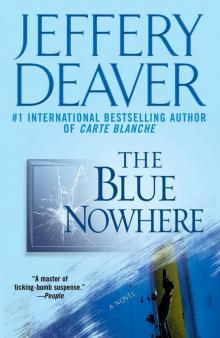 The Blue Nowhere: A Novel
The Blue Nowhere: A Novel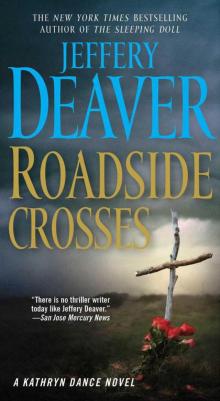 Roadside Crosses: A Kathryn Dance Novel
Roadside Crosses: A Kathryn Dance Novel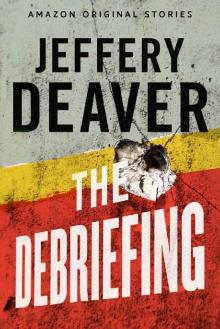 The Debriefing
The Debriefing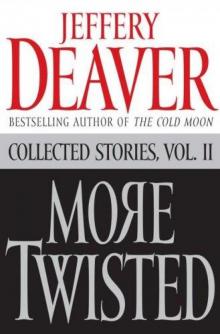 More Twisted: Collected Stories, Vol. II
More Twisted: Collected Stories, Vol. II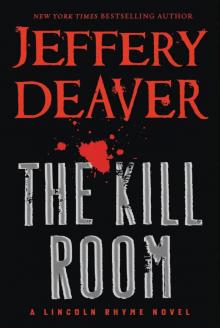 The Kill Room lr-10
The Kill Room lr-10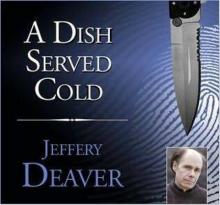 A Dish Served Cold
A Dish Served Cold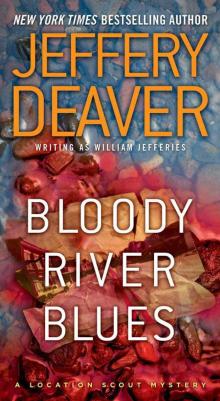 Bloody River Blues: A Location Scout Mystery
Bloody River Blues: A Location Scout Mystery The Bodies Left Behind: A Novel
The Bodies Left Behind: A Novel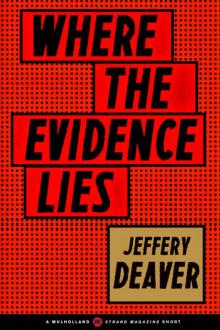 Where the Evidence Lies (A Mulholland / Strand Magazine Short)
Where the Evidence Lies (A Mulholland / Strand Magazine Short)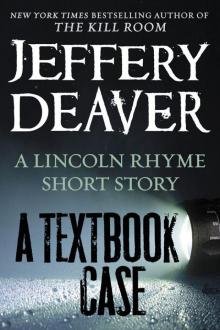 A Textbook Case (lincoln rhyme)
A Textbook Case (lincoln rhyme) Copycat
Copycat The Chopin Manuscript: A Serial Thriller
The Chopin Manuscript: A Serial Thriller Carte Blanche
Carte Blanche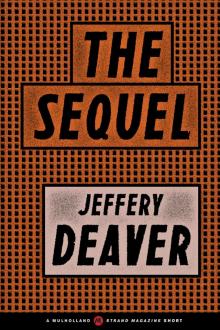 The Sequel
The Sequel